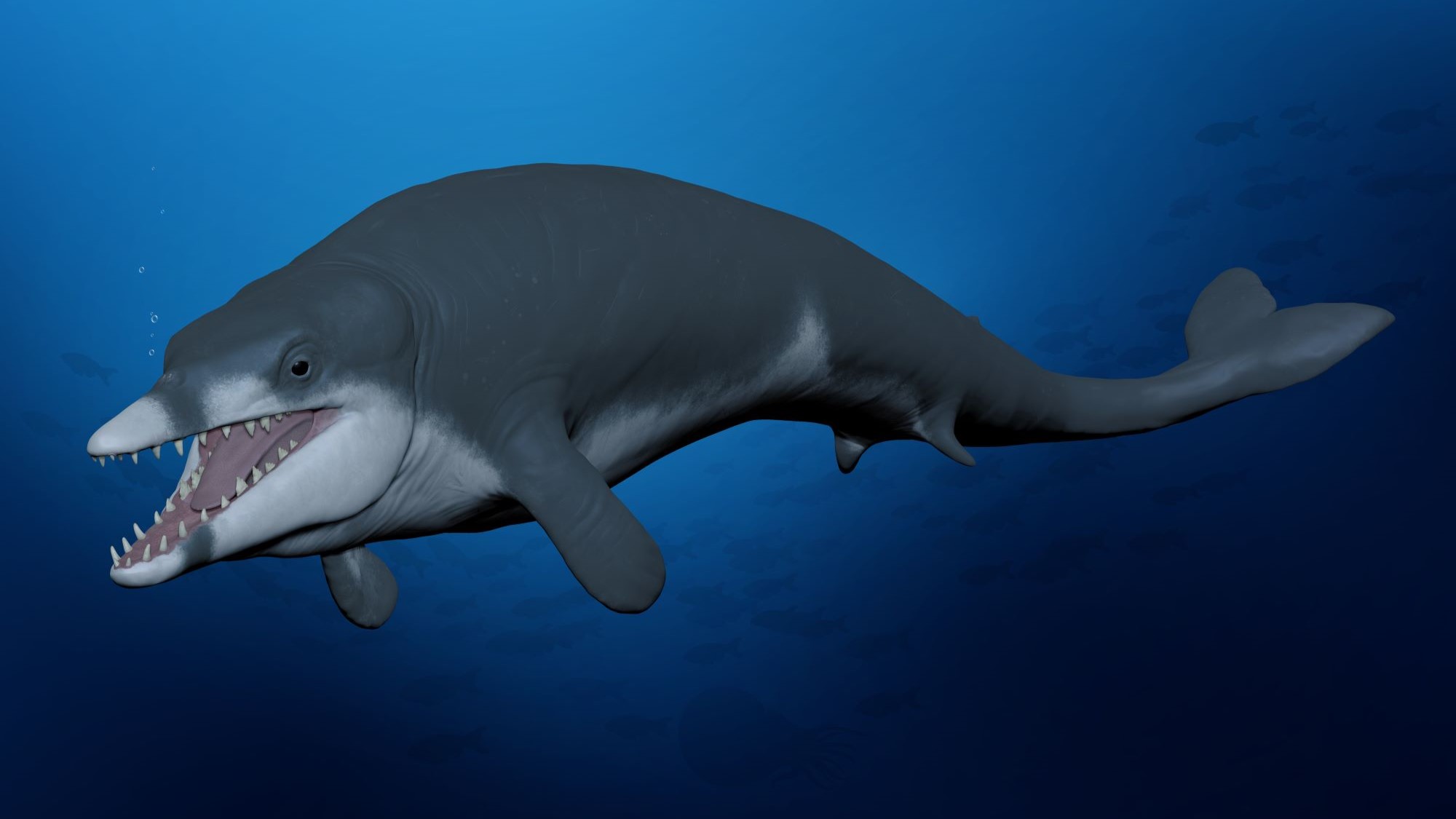

Antarctic blue whales, the largest animals on Earth, can reach 98 feet from mouth to tail. But to get to this massive length, these mammals needed the right conditions to grow, whether that was more food or protection from danger—perks of living in water.
Four hundred million years ago, the pre-mammalian ancestors of the ocean’s behemoths roamed on land on four legs. Ancestral whales returned to the sea 350 million years later. They likely spent so much of their lives in the water that, over time, their bodies completely adapted to swimming. But it’s unclear how much of this evolutionary history was amphibious before they fully submerged in the ocean.
Paleontologists in Egypt now have a better idea of what happened during this critical period of whale evolution. In a study published Thursday in Communications Biology, they unearthed fossilized remains of a miniature whale species that lived 41 million years ago. This extinct family, the basilosaurids, represents one of the earliest whale species to become fully aquatic. Though, if you saw one swimming in today’s seas, you might initially mistake it for a large fish. The newfound whale was only 8.2 feet long—12 times smaller than today’s blue whale.
[Related: This giant sea cow-like whale may have been the heaviest creature to ever live on Earth]
The study authors named the mini whale Tutcetus rayanensis, after the ancient Egyptian pharaoh Tutankhamun—a fitting name for a family of whales known as the “king of ancient seas,” says Hesham Sallam, an Egyptian paleontologist at The American University in Cairo and senior author of the study. The fossilized whale, like King Tut, died very young.
How the vertebrate and skull bones are fused suggests the whale was close to adulthood but did not reach it. It’s likely this whale specimen died before adulthood, though it was already sexually mature. The fossil remains show it was old enough to have adult molars but too young to have permanent premolars. Meanwhile, its enamel, the outer layer of its teeth, was very smooth, indicating it fed on fish, octopus, or other soft prey. Both are common features in mammals with shorter life cycles. According to Sallam, the teeth patterns also told them how this whale spent all of its time in the ocean, rather than an amphibious lifestyle like they previously envisioned for whale ancestors of this time.

The transition from a semiaquatic lifestyle to a fully aquatic one, as the basilosaurids did, is an area where more fossil data is needed to understand how these creatures evolved, says Ryan Bebej, an associate professor of biology at Calvin University in Michigan, who was not involved in the study. “Given its geologic age and phylogenetic position, Tutcetus is an important data point in helping us understand the earliest fully aquatic cetaceans.”
But why were these aquatic creatures dwarves compared to other basilosaurids? Basilosaurids around this time period were 13 to 59 feet in length. In contrast, this ancient whale was approximately 8 feet long and weighed around 412 pounds, making it “the smallest whale ever,” Sallam says. Today’s smallest whale, the dwarf sperm whale, grows just a little longer, at up to 9 feet.
Its little stature was likely an evolutionary response from a global warming event called the Lutetian thermal maximum. Forty-two million years ago, temperatures in the South Atlantic ocean rose by about 3.6 degrees Fahrenheit. Because smaller bodies lose heat more quickly than larger bodies, the mini size of these whales probably helped them survive. Sallam says this biological trait—prioritizing a tiny shape—is still seen today in animals living in warmer climates.
We don’t know how big (or small) this ancient whale would have grown to as an adult. But its bones provide valuable information on the evolution of aquatic creatures As they adapted to life in the water, cetaceans diversified in a variety of ways, and this little king of the ancient seas is just one regal example.
